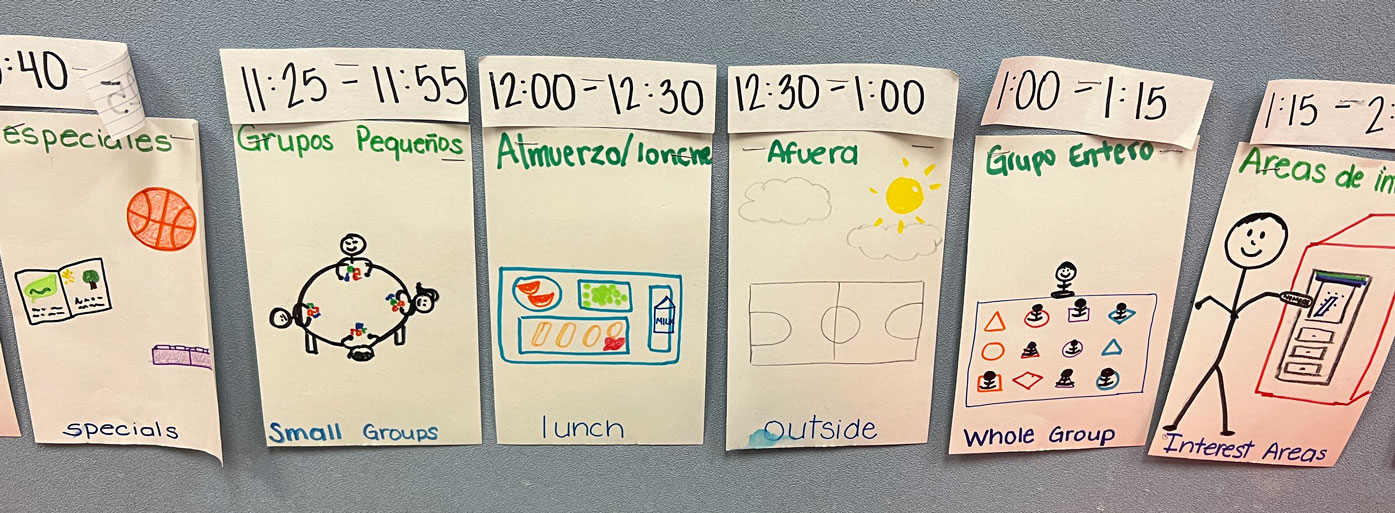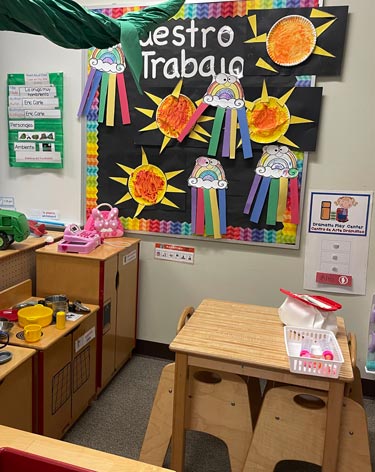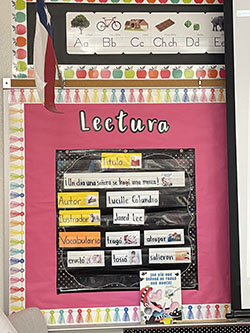Supporting Emergent Bilingual Children in the Early Childhood Education Classroom
Children identified as Emergent Bilingual (EB) students in a prekindergarten classroom must have access to instruction with linguistic accommodations based on their English proficiency levels. All EB students in prekindergarten programs have qualified for services based on the statewide English language proficiency assessment. Data from this assessment should be analyzed to identify the child’s current linguistic strengths and areas for growth. The current English language proficiency level will determine the extent of linguistic accommodation required for comprehensible English instruction. In Spanish-bilingual programs, the additional data of the native language proficiency assessment serves to guide instruction, not to determine program placement.
Language and literacy skills in the home language support English language and literacy development, so optimal language development occurs when EB students have opportunities to use both languages. In a bilingual classroom, the intentional use of cross-linguistic connections and biliteracy development enables children to access what they know in both their home language and English to demonstrate their knowledge and skills. In an English as a Second Language (ESL) classroom, the teacher uses a variety of strategies to make English instruction comprehensible for second-language learners. Families of ESL students should be encouraged to continue the development of home language oracy and literacy.
Recommendations for Instructional Support for Emergent Bilingual Students
Classroom Environment:
- Provide an environment that reflects the cultures, languages, and learning differences among all children served.
- Use differentiated instruction that is designed to support the child’s developmental and linguistic stages.
- Use incidental learning (natural course, meaningful repetition, motivation, novelty).
- Provide learning that is interesting, interactive, and cognitively challenging.
- Connect lesson topics to the lives of children.
- Develop routines to help children connect events and language.
- Stimulate authentic social interaction where children are encouraged to communicate and initiate interactions with others.
- Provide visual cues to aid understanding.
Oral Language:
- Reinforce language structures and leverage multiple daily opportunities to expand and extend language input.
- Use knowledge of the stages of language development in planning instruction with a focus on oral language and vocabulary development.
- Provide multiple opportunities for children to respond using appropriate pacing and ongoing progress monitoring of their oral language.
- Errors should be recast rather than corrected (Ex: S: “I goed to the park.” T: “Oh, you went to the park?”).
- Intentionally plan learning experiences that include cooperative elements such as partner work to encourage children's efforts at communicating. Provide focused stimulation and repetition with specific language features, such as targeted sounds, word analysis, vocabulary, comprehension, and fluency.
Literacy-Based Activities:
- Provide books and environmental print in the home language and English that are culturally and linguistically sustaining.
- Explicitly provide instruction with modeling of simple language and use of appropriate scaffolding during literacy-based activities.
Home-School Connection:
- Encourage families to continue the development of the home language while acquiring English. Both languages can develop at the same time, and comprehension and reasoning skills will transfer from one language to another.
- Parents without experience with U.S. schools may need more explicit support.
More Information
Please visit the English Learner Portal or the Emergent Bilingual Support webpage.




